February 4, 1898 was a stormy evening on the Florida east coast. A large ship, a three-masted barque, is sailing from Pensacola to Buenos Aires with a load of Southern pine. The captain had ventured too close to shore in the feisty storm and the ship hit the reef, just a few hundred yards offshore. The Lofthus, and her cargo of 930,000 feet of wood, was aground off Manalapan, Florida.
These facts are not new. The Lofthus is a well-documented wreck on the National Register of Historic Places and the Florida Underwater Archaeological Preserve. However, something was missing from its historical record – clear photographs of the wreck. Only one hazy photo seemed to appear in several online accounts.
While researching what South Florida libraries had posted online, I came across the Broward County Library system’s digital archives. As I scanned the collection names, one looked intriguing – the John Henry Moore Collection. The thumbnail representative photo showed a group of workmen, and the photo seemed to be from the pioneer era.
I clicked on the link and entered the collection, described as 14 photos of Palm Beach County from pioneer John Henry Moore. I looked at the photos and one immediately grabbed my attention – it was labeled “Sail Boat with People.” I knew it had to be one of the wrecked ships near Boynton, but I didn’t know which one – could it be the Coquimbo…or the Lofthus? The high resolution scan left no doubt – there on the hull written in white letters – LOFTHUS.
I began to look at the other photos, and realized the photos had been misidentified. Far from being a “sail boat,” the Lofthus was a three-masted iron barque that was 222 feet in length, 37 feet in beam, and had a 23 foot depth hold. The ship was rated at 1,277 gross tons with two decks and a cemented bulkhead.
As I looked at each photo, I realized the historic significance – finally, clear photographs of the Lofthus, which is one of the best remaining examples of an iron barque wreck. More than one story needed to be told – that of the Lofthus, and the new information that could be gleaned from photos and newspaper articles, and a more personal story of a forgotten pioneer, John Henry Moore.
Part one of this blog will cover the Lofthus wreck and its newly discovered photos. Part two will tell the story of John Henry Moore and his role as an early pioneer in the settlement known as “Bocaratones”- today’s Boca Raton.
Part One – The Wreck of the Lofthus
The Lofthus began her duties at sea under a different name. She was built in 1869 in London and christened as the Cashmere. She spent many decades plying the South Asian seas, even having false gun ports painted on her sides to warn Javanese pirates. She was sold to Norwegian interests, and the ship began hauling cargo throughout the Caribbean and South America as the Lofthus.
Her last voyage began January 21, 1898 in Pensacola, with Captain O. Andersen at the helm. She was loaded with Southern pine, destined for Buenos Aires. Sea captains would often ride the Gulf Stream north, then shoot out to sea and travel southwest towards South America. On the evening of February 4, the ship ran into a terrible storm. There were no lights along the largely uninhabited South Florida coastline; it was difficult for the captain to get his bearings. With 16 men aboard, several small boats from shore attempted to rescue the men, but it was too rough. The men made it ashore with their life preservers.
Once word spread that a ship had wrecked offshore of modern-day Manalapan (then called Hypoluxo Beach), locals sent a telegram from Jupiter to Key West to inform shipping interests of the wreck. Wrecks were common and a way to make good money from the cargo. Some experts thought the ship could be refloated once unburdened from her heavy cargo.
By February 9, her riggings (sails) were removed once experts doubted that the ship could be re-floated as she was stuck hard on the coquina rock reef. The ship’s dog and cat were rescued as well, and adopted by local families. The underwriters determined the ship and its contents would be auctioned on the beach. It was insured for $35,000.
Manalapan Cottage, built by Elnathan Field in 1894, was the only nearby building. In 1892 Field purchased the Hypoluxo beachfront and used the cottage as a boarding house and for selling beach lots. One of the hotel guests served as auctioneer – Major Nathan S. Boynton, for whom Boynton Beach is named. Boynton purchased beachfront land further south to build his own hotel. Boynton auctioned off the ship’s provisions including canned goods, hard tack, barrel goods, cooking utensils and guns, and the ship’s remains and cargo. W.M. Brown of Titusville, and L. C. Oliver of Miami paid $500 for the wreck and $550 for its 930,000 feet of wood. The wood’s estimated value was $30,000, so Brown and Oliver stood to make a nice profit.
Removing the wood from the ship fell to L. T. Coody, who worked for Oliver. The right man for the job emerged with civil engineer and Boca Raton founder Thomas Moore Rickards. Rickards had been in Florida for decades and was settling Boca Raton for Henry Flagler. By the end of March, Rickards and his crew were unloading the ship.
The April 7, 1898 Tropical Sun newspaper described how Rickards built a tramway and windlass to lift the wood over the steep beach ridge. Descriptions are no longer necessary. There among Mr. Moore’s photos was a photograph of the tramway and windlass, a winch-like device where a cart is drawn up the ridge. Rickards is seen in the photo by the tram loaded with wood, with a hat, white shirt and tie.
As the tram cart was on top of the ridge, it used braking action to glide down to the lake side. The barrier island was narrow at that point. This too was captured in a photograph. Here we see the wood floating on the lake, what had been described as “Pontoon bridge and sail boat.” In fact the wood acted much like a barge, and could float itself. In the photo the schooner Dash served as the tow boat which took the wood north and south as needed; some was floated down to Delray while much of it was floated to West Palm Beach to load on trains bound for Miami.
Many men worked on this large endeavor to remove the wood from the ship. In one of Moore’s photos, the workmen lined up for a photo in front of a young grove of coconut trees; both Moore and Rickards are in the photo. Many of the people are recognizable across multiple photos, such as the tall bearded man in overalls, who appears in the middle; he also appears in the photo with the wood floating on the lake. He fits the physical description of Charles A. Charter, who farmed hogs on nearby Hypoluxo Island.

Men who worked to remove the wood cargo from the Lofthus. Rickards and Moore are seen in the photograph
According to the March 31 Tropical Sun, Rickards camped on Hypoluxo Beach. In this Moore photo, several men are seen at what looks like a hut and palmetto shack on the beach. This could be the hut in which Rickards stayed during the wood removal operation.
Locals were startled on August 4 to see a United States Navy tugboat firing upon the hull of the Lofthus, probably for target practice as it headed south towards Cuba for the Spanish-American war. Several of the shells missed the target and flew into nearby coconut groves, splitting several trees.
By September, the wood that was accessible had been removed from the ship but an estimated 300,000 feet remained in its hold. The Florida Star reported that ship inspectors decided to blow up the ship’s hull with dynamite to release the remaining wood. It worked, and the remaining wood floated out of the ship. The explosion scattered the wreck across the sea floor.
The Lofthus was not the only wreck to be seen at that spot. In 1897 another ship had wrecked in almost the exact same spot. On February 1, 1897, the wooden barque Oh Kim Soon wrecked on the beach. The captain thought he was 30 miles offshore, but the ship snagged the reef and was pounded for hours till it freed itself and beached, broken in two. Captain Lloyd Morton of Nova Scotia and his wife were onboard; she was taken in by the Pierce family in Hypoluxo. Mr. Moore captured the scene of two wrecked ships – the Lofthus stuck on the reef, and the remnants of the Oh Kim Soon on the beach.
Time dissolved the Oh Kim Soon’s wooden hull, but the Lofthus proved to be much more durable. It remains a popular dive spot with snorkelers and scuba divers, and some of the wreck is typically visible in the winter after storms. Local preservationists worked to have the wreck site placed on the National Register, which was achieved in 2004. Access is gained by boat, or by walking about a mile north of the South Lake Worth Inlet (Boynton Inlet).
Part II – Boca Raton Pioneer John Henry Moore – Stay tuned for the post!
Special Thanks to:
Rochelle T. Pienn, Curator – Bienes Museum of the Modern Book, Broward County Library
Alexis Montero, Digital Initiatives Librarian, Broward County Library
Julian McNeill, Broward County Library
Susan Gillis, Curator, Boca Raton Historical Society
Janet Naughton, Librarian, Palm Beach State College
All photographs are courtesy of the Broward County Library




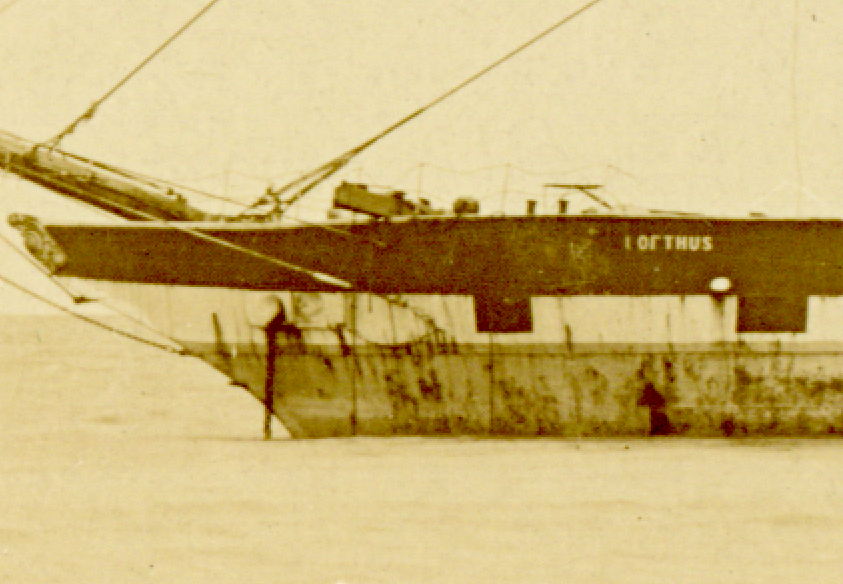
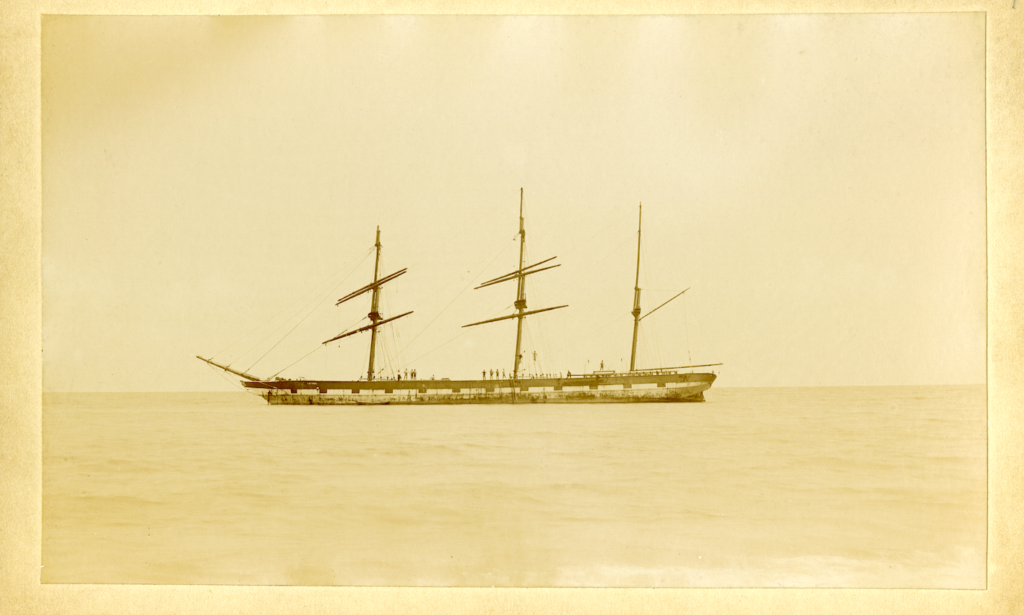

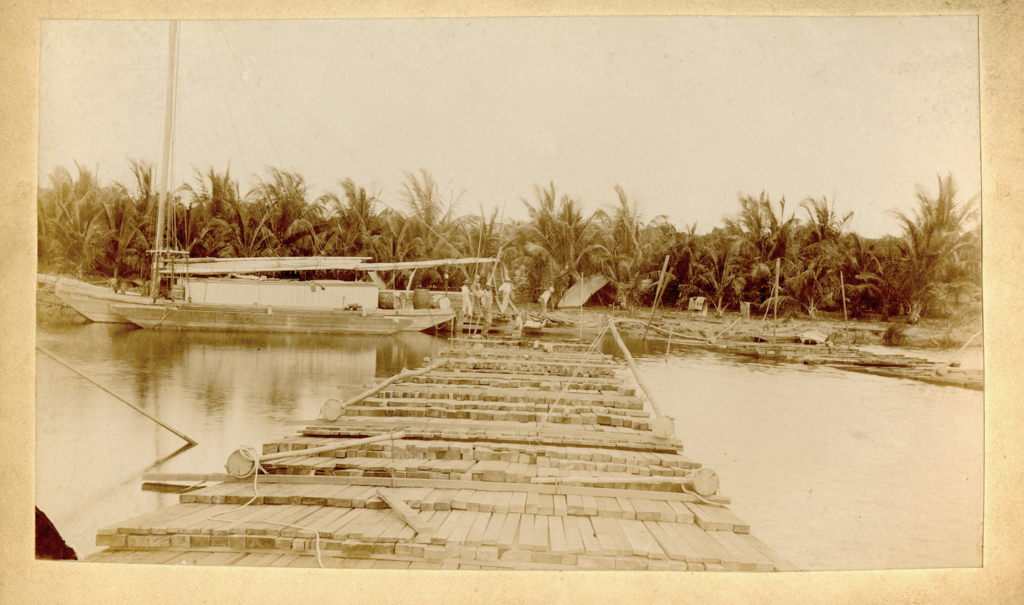
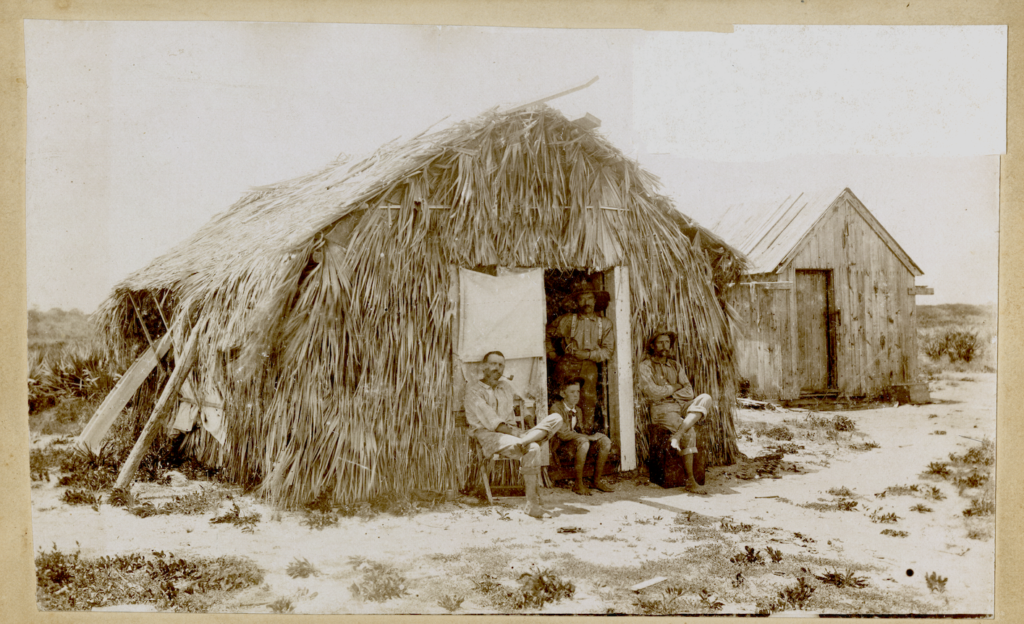
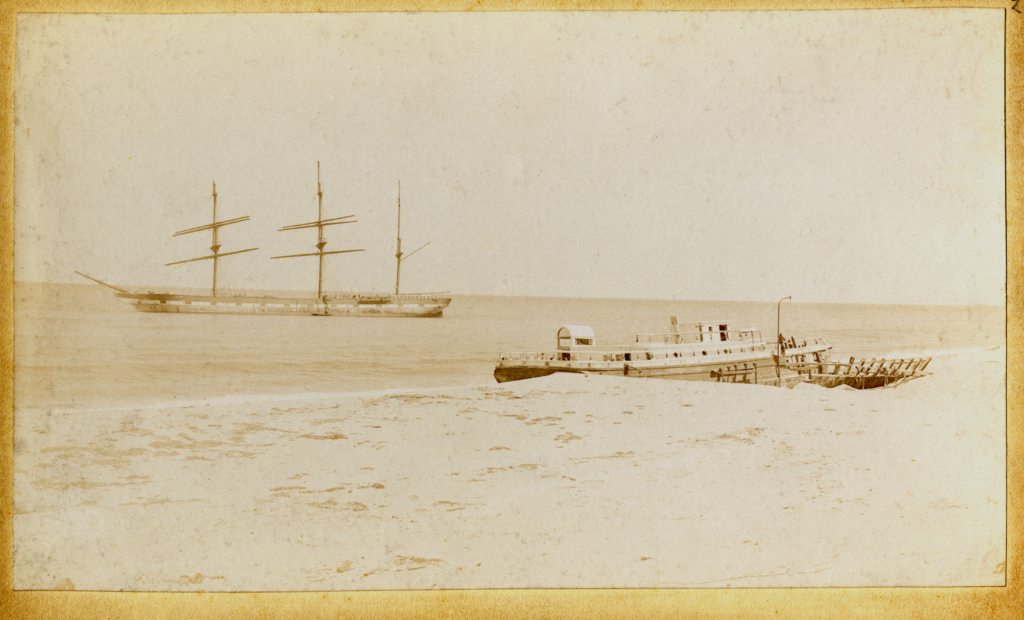
Wow, what a read! Great sleuth work, and a story well-told, obviously fueled by passion.
Needless to say, enjoyed pics, too. Keep up the great work–
Pingback: Boca Raton’s Forgotten Pioneer John Henry Moore
I’m the person who submitted the wreck-site of the Lofthus to the State for consideration as an underwater preserve. Unfortunately, the Lofthus has been almost completely re-buried this last year. Regarding the photo with the other wreck said to be the Oh Kim Soon, I’d like to discuss that with you. Lots of wrecks in that area.
I discovered this story for the first time. Thomas Rickards was my great grandfather. I wish that I could go back to that time and meet the man who would become such a significant figure in my past.
Much needed local history read! I am adding this to my list of spots and want to dive or snorkel this ASAP.
Cool story. Why did they leave so much wood on board the Lofthus? They spent so much time and effort building the tram and the windlass. They should have taken it all